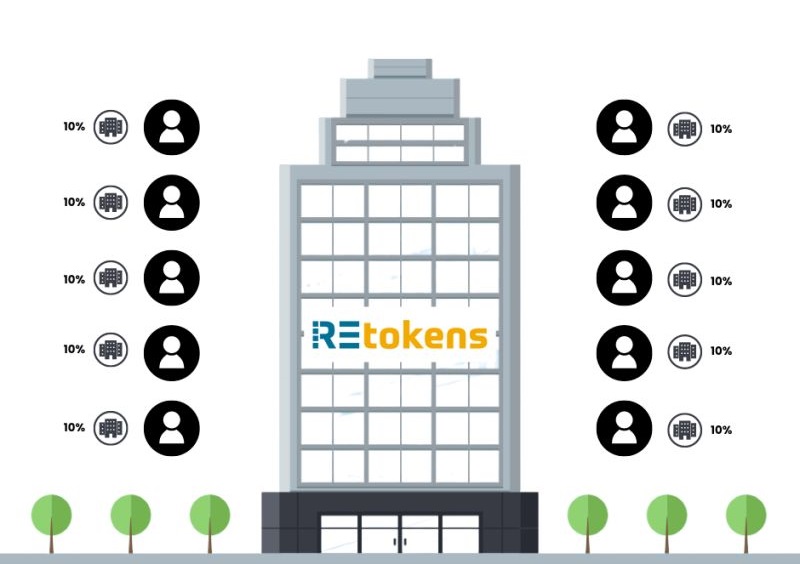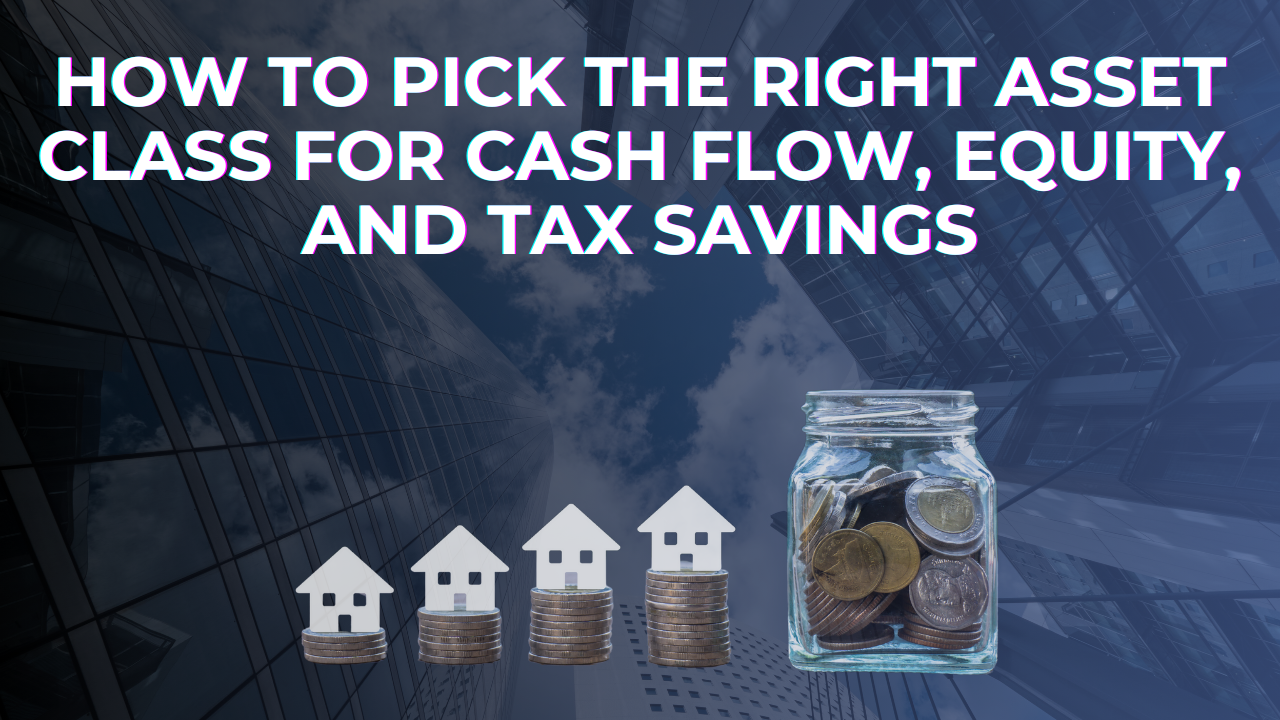Introduction
Investing in real estate is one of the most powerful ways to build and preserve wealth. But with so many different types of real estate assets, how do you know which one is right for your portfolio? Whether you’re looking for steady cash flow, significant equity gains, or strong tax benefits, diversifying across different real estate asset classes can help you achieve a balanced and resilient investment strategy.
Furthermore, with the rise of tokenized real estate, it has become easier than ever for investors to diversify their holdings across different asset types without needing millions in capital. In this article, we’ll explore various real estate asset types, the pros and cons of each, and how tokenization is revolutionizing the way we invest in real estate.
1. Diversification in Real Estate: Why It’s Important

Diversifying your investments in real estate means spreading your capital across different types of assets that perform differently in various market conditions. By doing so, you can manage risk, maximize returns, and ensure your portfolio is better insulated against downturns in any one sector.
For instance, an investor might choose:
- One asset that generates steady cash flow, such as a multi-family rental property.
- Another asset with a strong equity play, like a land investment or a new development.
- A third asset that offers significant tax benefits, such as a commercial building with depreciation advantages.
This approach ensures that you’re not overly reliant on any single stream of returns and that your portfolio is resilient across various market cycles( Investopedia )( Mashvisor ).
2. Real Estate Asset Classes and Their Role in Your Portfolio

Let’s explore the different real estate asset types, their pros and cons, and how they can play a role in your diversified portfolio.
a) New Apartment Developments vs. Class C Apartment Buildings
- New apartment developments are typically high-end properties in desirable locations. These assets offer strong appreciation potential as they are new and located in growth markets. New developments often come with modern amenities, which attract premium tenants willing to pay higher rents.
- Pros: Potential for significant appreciation; lower maintenance costs; high tenant demand in desirable areas.
- Cons: High upfront costs; delayed cash flow until lease-up is completed; vulnerable to market cycles that may slow demand for luxury units(
On the other hand, Class C apartment buildings are older properties that typically require renovations. Located in less affluent areas, these buildings tend to offer immediate cash flow but may require more hands-on management.
- Pros: Lower acquisition costs; immediate cash flow potential; opportunity for value-add improvements.
- Cons: Higher maintenance and repair costs; lower appreciation potential; risk of tenant turnover
In a diversified portfolio, you might hold a new apartment development for long-term appreciation while a Class C building could provide immediate cash flow, helping to balance the risk and return across different timelines.
b) New Housing Development vs. Established Portfolios
Investing in a new housing development involves buying into a project under construction or recently completed. These properties offer high appreciation potential but carry risks related to delays in construction and leasing.
- Pros: High upside for appreciation; modern properties with low maintenance costs; ideal for investors in growth markets.
- Cons: High capital required; delayed cash flow until the property is leased and stabilized; risk of project delays( Investopedia )( A Street Partners ).
An established portfolio, on the other hand, refers to a collection of properties that are already fully leased and generating income. These properties provide immediate cash flow with lower risk, making them a safer choice for risk-averse investors.
- Pros: Steady and predictable cash flow; lower risk due to existing rental history; easier to finance due to proven income.
- Cons: Less potential for rapid appreciation; properties may require maintenance as they age( Mashvisor )( LLC Attorney ).
In your portfolio, an established portfolio could serve as the steady cash-flow generator, while a new housing development represents your higher-risk, higher-reward equity play.
c) Mixed-Use Retail (Strip Malls) vs. Office Buildings
Mixed-use retail properties, like strip malls, offer multiple income streams from different tenant types, including retail stores and office spaces. These properties are particularly appealing because of the diversity of their revenue streams.
- Pros: Multiple income sources reduce risk; attractive to a wide range of tenants; good potential for rent increases over time.
- Cons: Higher management complexity; vulnerability to retail sector downturns, such as the shift to online shopping
Office buildings, especially those in urban centers, can be long-term cash flow machines due to the long leases of corporate tenants. However, they face risks related to changes in workplace trends, such as the shift to remote work after the pandemic.
- Pros: Long-term leases with stable tenants; low tenant turnover; high income potential in key markets.
- Cons: High vacancy risk if a tenant leaves; sensitive to economic downturns and shifts in work culture.
In a diversified portfolio, a mixed-use retail property might serve as a moderate-risk investment that offers both cash flow and appreciation potential. Office buildings, meanwhile, could provide steady income from long-term leases.
d) Industrial Buildings
Industrial properties, particularly warehouses and logistics centers, have been hot commodities in recent years due to the rise of e-commerce. These properties tend to offer high rental yields and low vacancy risk, making them attractive for income-focused investors.
- Pros: High rent potential and low management requirements; long-term leases; strong demand due to e-commerce growth.
- Cons: Expensive to acquire; harder to re-lease if tenants vacate; sensitive to economic downturns.
Industrial properties are ideal for the cash flow component of a diversified portfolio, providing reliable income with relatively low management intensity.
e) Land Investments
Investing in land is more speculative because it typically doesn’t generate immediate cash flow. However, the potential for appreciation, especially if the land is developed or rezoned, can be significant. Investors often purchase land in growth areas, betting on future developments that will increase the land’s value.
- Pros: Significant appreciation potential; low holding costs; flexible exit strategies (develop, sell, or lease).
- Cons: No immediate cash flow; development risk; dependent on future market conditions.
Land investments are ideal for the equity growth part of a portfolio, offering high appreciation potential but little immediate return.
3. Leveraging Tokenized Real Estate for Diversification

In the past, diversifying your real estate investments across multiple asset types required substantial capital and management capacity. Tokenized real estate is changing that by enabling fractional ownership in various real estate projects, making it easier for investors to diversify across different asset classes.
What is Tokenized Real Estate? Tokenization refers to dividing ownership of real estate properties into digital tokens that can be bought and sold on blockchain platforms. Each token represents a fraction of the property’s ownership, allowing investors to access high-value assets with smaller amounts of capital.
How Tokenization Facilitates Diversification:
- Accessibility: With tokenization, investors can own a piece of multiple properties across different asset classes—apartments, office buildings, land, or industrial properties—without the need to buy entire properties themselves.
- Liquidity: Traditional real estate investments are illiquid, meaning it’s difficult to quickly sell or exchange them. Tokenized assets, however, can be traded more easily on secondary markets, offering more flexibility.
- Fractional Ownership: Tokenization allows investors to own smaller fractions of high-value assets, making it easier to diversify. For example, you can invest in an industrial building for cash flow, a land project for equity appreciation, and a mixed-use property for tax benefits, all with a relatively small amount of capital.
4. Tax Benefits Across Real Estate Asset Types

Diversification is not only about balancing risk and return but also about optimizing tax efficiency. Different real estate asset classes offer various tax benefits that can significantly improve your after-tax returns.
For instance, commercial properties often offer higher depreciation benefits than residential properties. Depreciation allows you to deduct the building’s wear and tear from your taxable income, even if the property is appreciating in value. Moreover, tax strategies like 1031 exchanges enable investors to defer capital gains taxes by reinvesting in similar properties( A Street Partners )( Investopedia ).
Example of Diversified Tax Benefits:
- A mixed-use retail property might provide significant depreciation benefits, helping to offset other income.
- A Class C apartment building could offer operating expense deductions and lower taxable income from rents.
- A new development might benefit from tax credits or incentives, especially in opportunity zones.
Conclusion: Building a Balanced, Diversified Portfolio
Choosing the best real estate asset type is not a one-size-fits-all approach. By understanding the unique benefits of different asset classes—whether it’s cash flow from industrial properties, equity growth from land investments, or tax advantages from commercial buildings—you can build a well-rounded and resilient real estate portfolio.
Furthermore, with the advent of tokenized real estate, investors now have the opportunity to easily diversify their holdings across multiple asset classes without needing significant upfront capital. This opens the door to a wider range of investments, making it easier to balance risk, maximize returns, and ultimately build lasting wealth in real estate.
Whether you are a seasoned investor or just starting, diversification remains a cornerstone of successful investing, and real estate offers.






